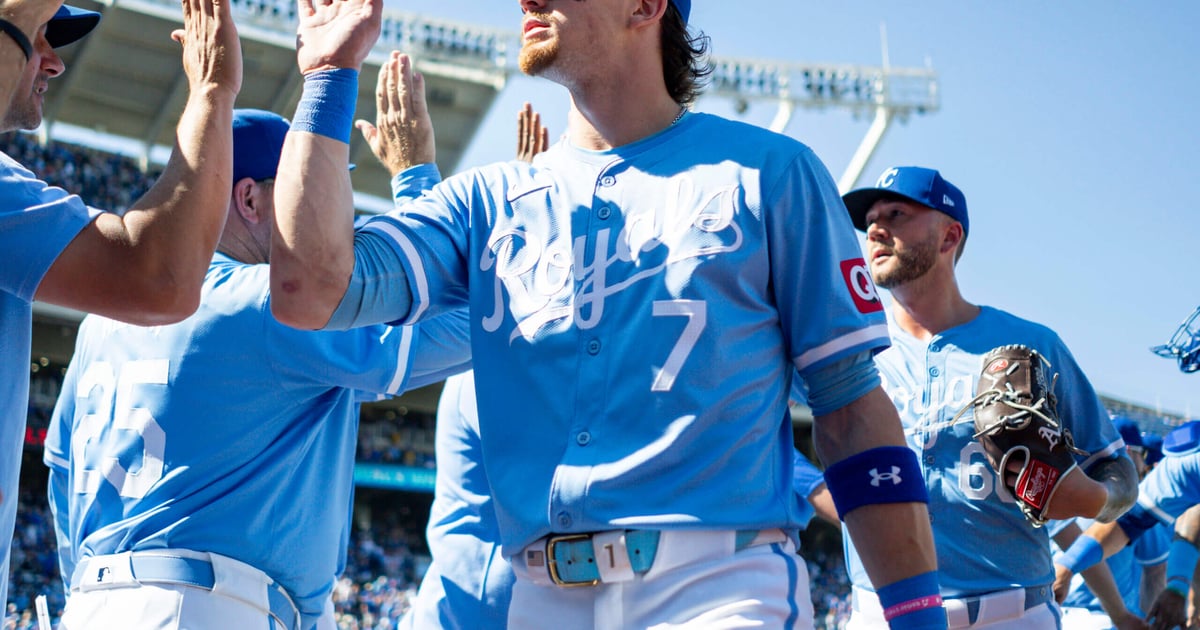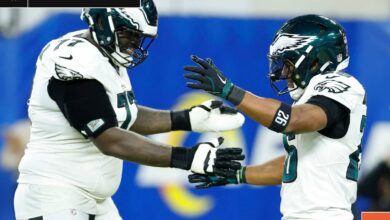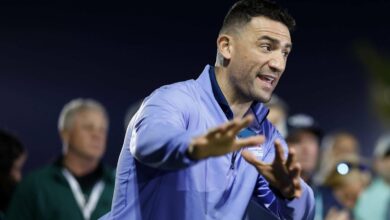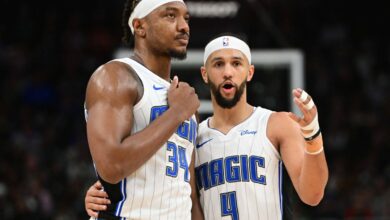Ghiroli: Why the Kansas City Royals Are Good for Baseball

The Kansas City Royals are good for baseball, and not just because they’re a small-market team vying for a playoff spot or because Bobby Witt Jr. is one of the game’s biggest young stars.
No, the Royals are good for baseball because they are a shining example of what every organization in professional baseball should do: try.
The Royals, you’ll recall, spent nearly $110 million on free agents this winter. The moves were well-received, but they didn’t exactly make national headlines. They didn’t spend half a billion dollars on two players like the Texas Rangers before 2022. They did not win the Shohei Ohtani lottery.
The Royals, who lost 106 games last year, wanted to improve quickly. They realized that player development and amateur scouting weren’t going to be enough, so they bolstered the roster in free agency, aggressively adding more than a half-dozen players. Now, with a winning season under their belt, they’re poised to clinch a postseason berth, perhaps as soon as this week.
Revolutionary? Hardly. Rare? In today’s game, very.
““Sometimes you need that slap on the head, right?” Royals owner John Sherman, who green-lighted the spending, told reporters this spring. “We don’t know what’s going to happen, but we can’t tolerate something like that again for our fans.”
Any owner can afford an offseason like the Royals had. They were aggressive without being stupid, adding again at the trade deadline and over the past month via the waiver wire. And yet few have done it.
While MLB has taken steps to combat the sport’s downward trend, getting teams to try consistently, executives to take risks and owners to open their pockets is another story.

JJ Picollo, the Royals’ executive vice president and general manager, has made sure his company stands out from other teams. (Mark J. Rebilas / Imagn Images)
Witt’s otherworldly season (he’ll easily reach 10 fWAR) would make him a surefire American League MVP contender if it weren’t for the New York Yankees’ Aaron Judge. It also comes after a spring in which Sherman agreed to an 11-year, $288.8 million contract extension for the Royals’ young star that could be worth as much as $377 million after 14 years. It’s the most lucrative deal in franchise history.
Again, if Kansas City — one of the smallest markets in baseball — can do it, why can’t everyone else?
While other teams have downsized departments and cut staff — last week alone, a half-dozen teams cut back on scouting and player development, according to league sources, or “restructured” in the nonstop efficiency-speak of front offices — the Royals have added infrastructure. In the two years since executive vice president of baseball operations JJ Picollo took over, Kansas City has revamped all three of its scouting departments with new leaders, modernized the organization and changed the culture. The Royals have put an emphasis on data, adding six new people to the research and development team, including a new executive director. They’ve done that by hiring people with traditional baseball resumes but open minds.
Picollo, who was promoted from within when Dayton Moore was fired, hasn’t hesitated to hire outsiders, even ones with whom he had no prior relationship, such as manager Matt Quatraro. Quatraro, like Picollo, has been widely praised for leading the turnaround, bringing a curious mind and a willingness to innovate. These aren’t two young Ivy League grads taking the reins; both men played minor league baseball and are in their 50s.
Perhaps the new market efficiency does things a little differently, zigzagging as others zigzag, even if it is not always new territory. These Royals, for all their successful attempts to modernize, are also masters of the basics.
Only the San Diego Padres lineup has a lower strikeout rate, and Kansas City also has one of the league’s best defenses, further bolstering a solid pitching staff.
From Day 1 of last offseason, the Royals targeted pitchers Seth Lugo and Michael Wacha, not because they were the best players available (they weren’t) or because either guy had wipeout stuff (neither pitcher has a 200-strikeout season to date), but because they fit certain principles. Lugo was a Cy Young-eligible All-Star this year despite a rare rough outing on Monday, while Wacha has gone 9-1 since early July with a 2.67 ERA and a 71-to-20 strikeout-to-walk ratio.
Down 52-45 early in the second half, Picollo and company didn’t wait to see which route the team would take, like so many other clubs not leading their divisions. Instead, they moved quickly again, unafraid to double down after several of their offseason relief options didn’t pan out. Kansas City acquired Hunter Harvey from Washington two weeks before the deadline and also added Lucas Erceg from Oakland, along with swingman Michael Lorenzen and infielder Paul DeJong.
When first baseman Vinnie Pasquantino was injured, Picollo added three players off waivers to fill the void: Yuli Gurriel, Tommy Pham and Robbie Grossman. The price was cash. The payout was immediate. The Royals had their eyes on Pham and Grossman at the deadline, but were unable to secure either. The group could have helped several clubs ahead of Kansas City in the waiver order. No one else jumped.
Not every move the Royals made has worked out. But like their drafting, the Royals front office has a fairly low whiff rate. And as they try to chase the Baltimore Orioles for the top wild card position, Kansas City’s model has proven to be a good one.
It’s good for the city, which hasn’t had a playoff team since the 2015 World Series champions. It’s even better for baseball.
(Top photo of Bobby Witt Jr. celebrating a win with teammates: Jay Biggerstaff/Imagn Images)




